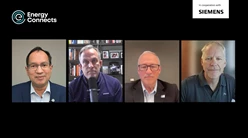The strategic role of passive fire protection in future-proofing high risk assets
In today’s energy landscape, the concept of ‘future-proofing’ has become central to how we think about building and maintaining high-value assets.
As industries transition toward lower-carbon operations and come up against tightening regulatory expectations, the ability to ensure resilience, reliability and long-term value has never been more critical.
For operators in complex, high-risk environments such as oil and gas, this isn’t just about meeting today’s safety standards - it’s about safeguarding tomorrow’s productivity. And one area that supports how we approach asset resilience is passive fire protection (PFP).
Traditionally, PFP has been viewed as a compliance-driven necessity - a layer of defence designed to maintain structural integrity during a fire. That purpose remains important, but its strategic value has evolved.
Increasingly, operators are recognising that effective PFP isn’t simply about meeting codes, it’s about enabling operational efficiency, reducing total cost of ownership, and supporting sustainability objectives.
When specified and applied strategically, PFP can accelerate project delivery and improve the longevity of critical assets. By optimising protection early in the design and fabrication stages, operators can reduce rework, streamline installation, and extend maintenance cycles, all of which contribute to measurable savings and reduced environmental impact.
In an industry where project schedules are under constant pressure and margins continue to tighten, this shift in mindset matters. Forward-thinking operators are viewing fire protection as an investment in resilience, not an expense. The question is no longer ‘what does it cost?’ but ‘what value does it add over the lifetime of the asset?’
At International, we’ve seen this evolution play out first-hand through our work in passive fire protection. The Chartek range, developed over more than five decades, has become synonymous with durability and performance in the world’s toughest operating environments.
Our latest innovation - Chartek 2218E, introduced at ADIPEC 2025 - represents the next step in that journey. It’s designed specifically for shop-applied steel and achieves a two-hour UL1709 rating in a single-coat application over Charlok mesh. The result is up to 50% fewer application hours and up to 25% less material use, enabling savings in shop-applied costs without compromising on safety or performance.
But what’s most exciting is not just what this means for productivity - it’s what it means for sustainability. Fewer application hours and less material translate to reduced energy use and waste. Over the full project lifecycle, those incremental efficiencies add up to a meaningful reduction in environmental footprint.
That combination of performance, efficiency and sustainability is where PFP’s future lies. As energy systems evolve and asset specifications become more complex, the ability to tailor protection to meet precise operational and environmental needs will define the leaders in this space.
Asset operators should opt for suppliers that continue that long-term strategy with their approach to partnership. This is why at International, we aren't just suppliers, we have worked with customers over decades, advising and supporting projects as part of an indefinite future-proofing fire protection strategy.
Our global network of technical specialists works with customers from design through to maintenance and beyond, ensuring every system delivers consistent performance and compliance across regions and project types.
By combining deep technical expertise with local insight, our teams help operators tailor passive fire protection solutions to their unique asset and environmental demands. This collaboration extends beyond product selection - it's also about optimising application efficiency, reducing waste and enhancing long-term durability.
Through this partnership approach, operators gain the confidence to make informed choices that balance productivity, safety and sustainability from the outset, as part of their strategic long-term planning.
Through continued innovation and collaboration, the industry must strive to continue to help operators not only protect their assets, but also strengthen the resilience of their entire business.
In an era of transition, future-proofing means building smarter, safer and more sustainably, and passive fire protection is proving to be a powerful way to achieve exactly that.
Energy Connects includes information by a variety of sources, such as contributing experts, external journalists and comments from attendees of our events, which may contain personal opinion of others. All opinions expressed are solely the views of the author(s) and do not necessarily reflect the opinions of Energy Connects, dmg events, its parent company DMGT or any affiliates of the same.







